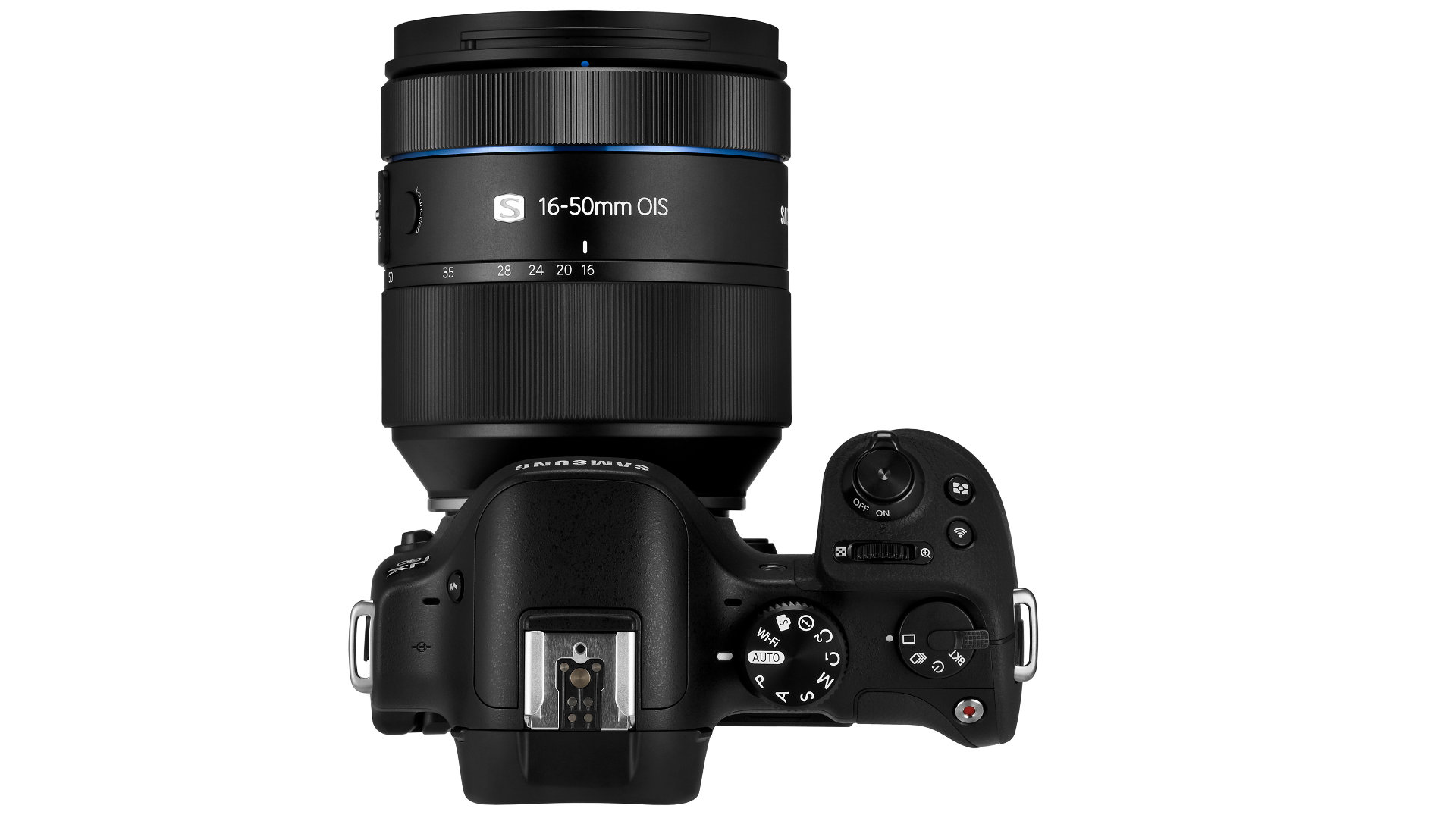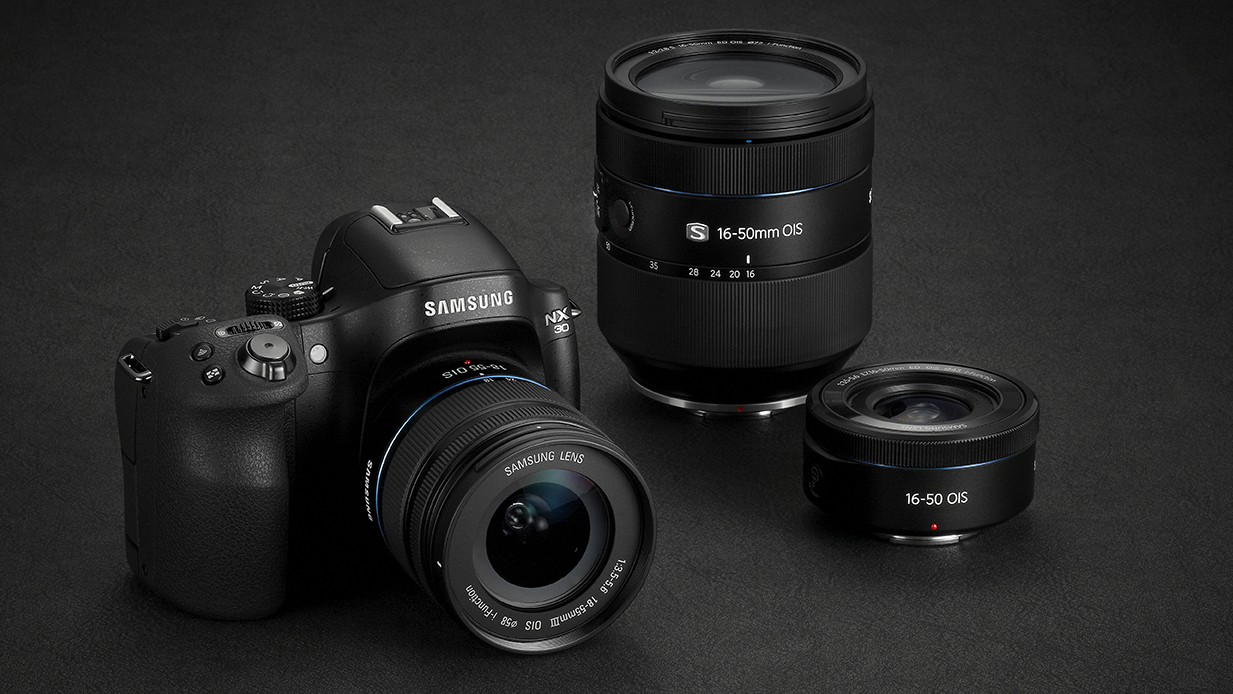TechRadar Verdict
It's hard to fault this camera from Samsung, it's great to handle and images are superb. If only the NX system was a little broader.
Pros
- +
Articulating touchscreen
- +
Great handling
- +
Tilting EVF
Cons
- -
Easy to accidentally set focus point
- -
Limited number of lenses
- -
Buttons not customisable
Why you can trust TechRadar
Although Samsung was one of the first manufacturers to launch a compact system camera to the market, back in 2010 with the NX10, it's fair to say that the NX range has failed to capture the same amount of attention as CSCs from Panasonic, Olympus and Sony.
Samsung's compact system cameras, like Sony's, feature an APS-C sensor, and unlike some of the other manufacturers mentioned. All of the cameras in the current Samsung line-up share the same sensor, a 20.3 million-pixel device.
Alongside that sensor, which we have found to be a good performer before, are a number of features which are likely to grab the attentions of serious enthusiasts. For starters, there's a fast, 1/8000 second shutter speed and a nine frames per second (fps) continuous shooting function.
For the first time in a Samsung CSC, there's also a tiltable electronic viewfinder, which boasts an impressive 2,359k dot resolution. It is joined by a three inch, 1037k dot, fully articulated touch-sensitive screen.

The camera features a hybrid AF (autofocus) system, with the sensor featuring 247 contrast detect AF points and 105 phase detection points.
Both raw format shooting and full manual control is available, along with semi-automatic modes such as aperture priority and shutter priority. There's also a host of creative extras, such as digital filters, which can only be shot in JPEG, or Picture Wizard, which can be shot in both raw format and JPEG.
Samsung is a key advocate of Wi-Fi technology, so it's no surprise to see it featured here on the NX30. As with other SMART (Samsung's term for Wi-Fi connected) cameras, there is a variety of useful functions that make use of this. For instance, you can upload images directly to Facebook as well as using your phone or tablet to control the camera. There's also a baby monitor setting which means you can set up the camera in the room of a child and use your phone to keep tabs on your infant.
Sign up for breaking news, reviews, opinion, top tech deals, and more.

Samsung announced a new 'premium' lens, the first of its kind in the Samsung range, at the same time as the NX30 was. The 16-50mm f/2.0-f/2.8 offers the brightest maximum aperture for a 3x zoom lens, and indicates that Samsung is trying to attract a more serious kind of photographer than ever before. The company has indicated that more premium lenses will be coming soon too.
The NX30 comes packed with an 18-55mm iFunction lens as standard. iFunction lenses, unique to Samsung, allow you to control some aspects of the camera's functionality via a button on the lens itself. At present, there are 13 lenses available for the NX range, all of which are iFunction optics. Although the range isn't as large as those available for Micro Four Thirds, there are some interesting primes and zooms available.
Unlike the Samsung Galaxy NX, the user interface of the NX30 is not an Android operating system, but the same menu system as used on other NX cameras. Whereas some Sony cameras allow you to download additional apps from the company's PlayMemories store, there's no such additional functionality than can be added with the NX30.
Other interesting features of the NX30 include a DRIMeIV image processing engine and full HD video recording.
As it sits at the top of Samsung's line up, the NX30 goes head to head with the likes of the just recently announced Sony a6000, Sony's most advanced APS-C compact system camera, the Panasonic GH4, the Olympus OM-D E-M10 and arguably even the Fuji X-T1, with which it shares a relatively similar shape, if not the retro styling.

Amy has been writing about cameras, photography and associated tech since 2009. Amy was once part of the photography testing team for Future Publishing working across TechRadar, Digital Camera, PhotoPlus, N Photo and Photography Week. For her photography, she has won awards and has been exhibited. She often partakes in unusual projects - including one intense year where she used a different camera every single day. Amy is currently the Features Editor at Amateur Photographer magazine, and in her increasingly little spare time works across a number of high-profile publications including Wired, Stuff, Digital Camera World, Expert Reviews, and just a little off-tangent, PetsRadar.
